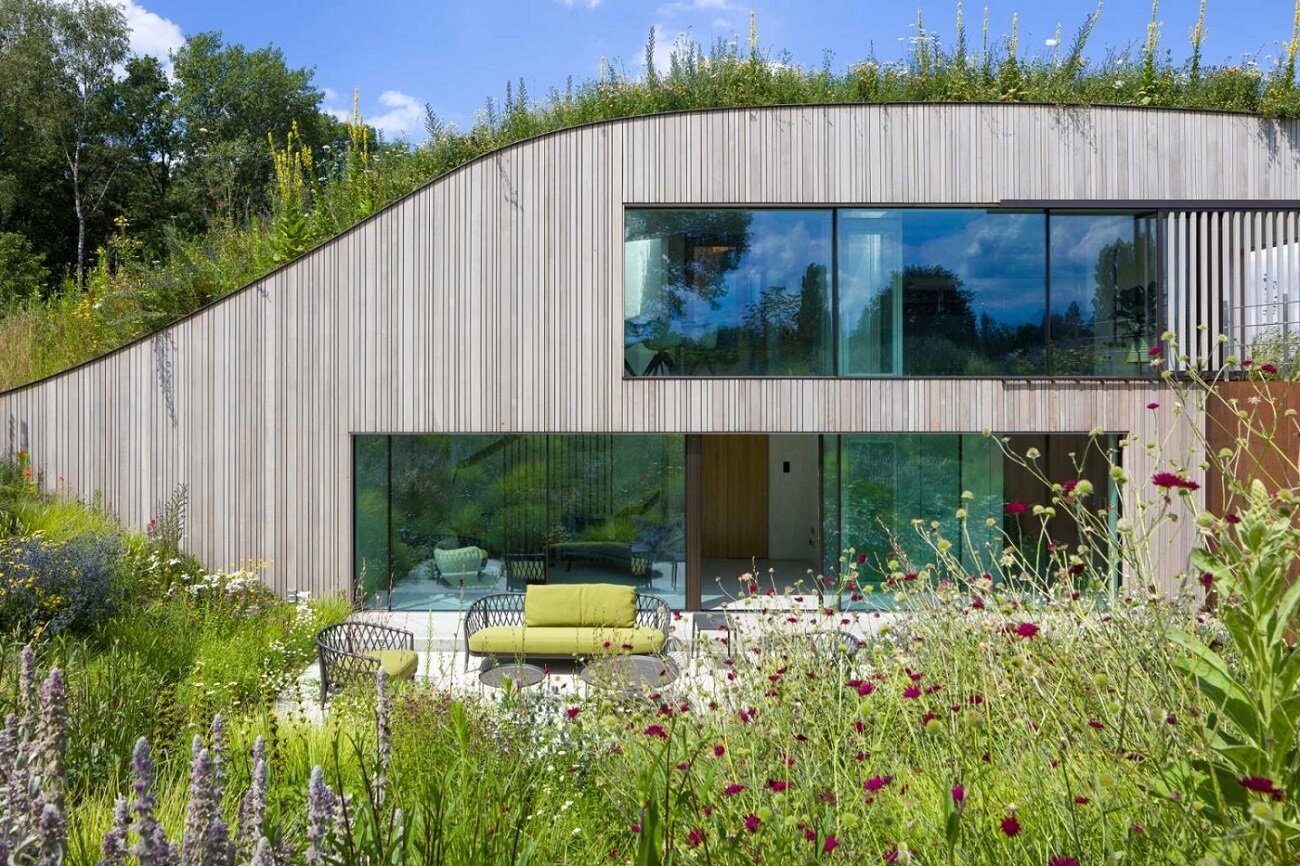#17483. Wavy wooden facade with a green roof: an eco-friendly solution in contemporary architecture

The presented architectural specimen is a magnificent example of ecologically integrated design, where a modern building organically blends into the natural landscape. The facade is made of light-colored vertical wooden panels, creating a minimalist yet expressive texture. A key feature of this facade design is its wave-like form that follows the contours of the hill on which the house is situated.
The upper part of the structure is crowned with a green roof planted with various vegetation, which not only visually connects the building with the surrounding nature but also provides additional thermal insulation. Large panoramic windows on both levels ensure abundant natural lighting for the interior spaces and create an impression of openness, despite the enclosed nature of the main part of the facade.
The lower level of the house opens onto a small terrace with contemporary furniture, framed by a lush flowering garden. The harmonious combination of architectural elements and landscape design creates an idyllic atmosphere and emphasizes the ecological character of the project. This approach to facade design demonstrates how modern architecture can complement nature rather than oppose it.
In your own project, similar techniques can be employed through the selection of natural materials for cladding, integration of green elements (vertical gardens, green roofs), adaptation of architecture to the terrain of the site, and maximum use of panoramic glazing to create a visual connection with the surrounding landscape.